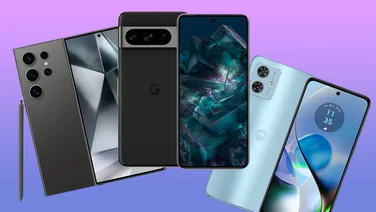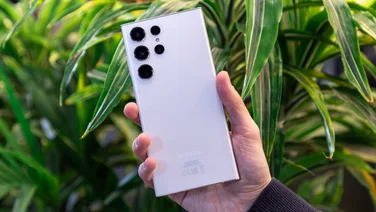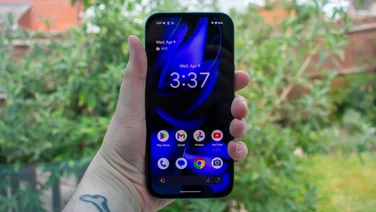To help us provide you with free impartial advice, we may earn a commission if you buy through links on our site. Learn more
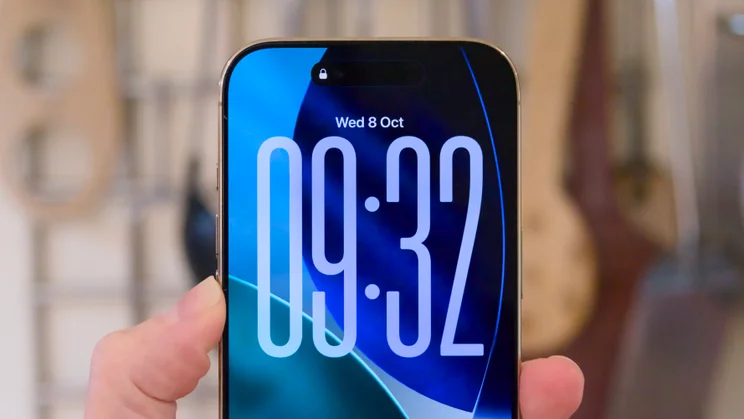
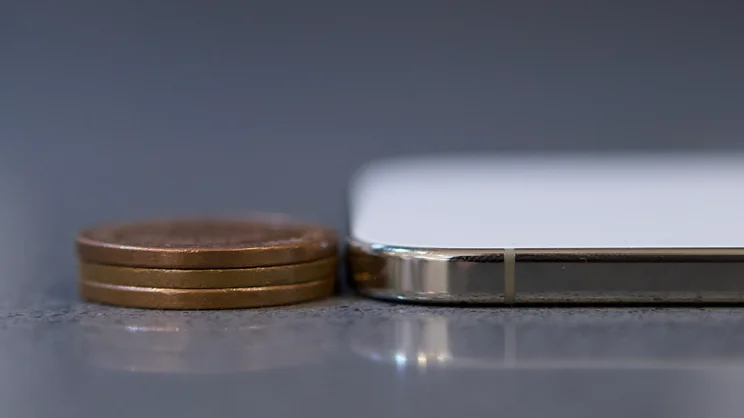
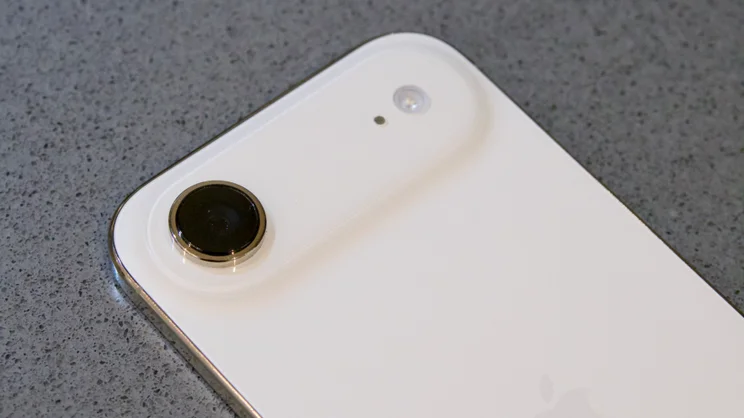
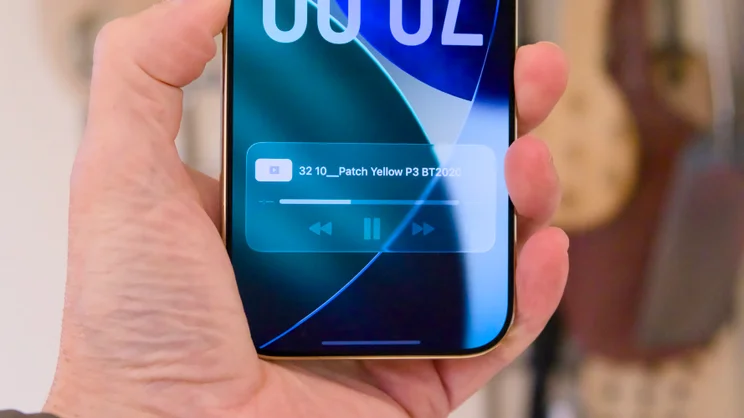
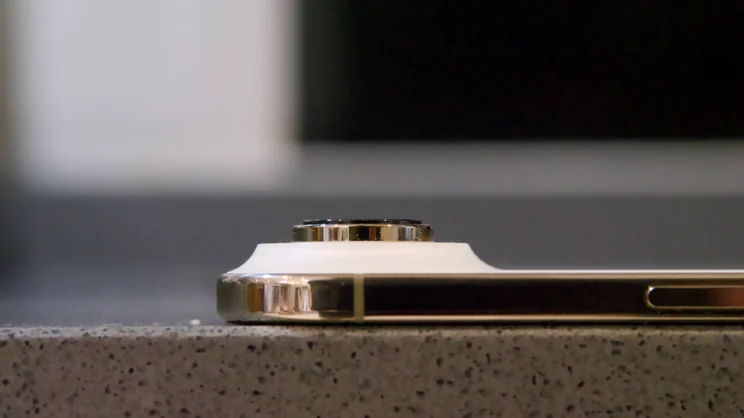
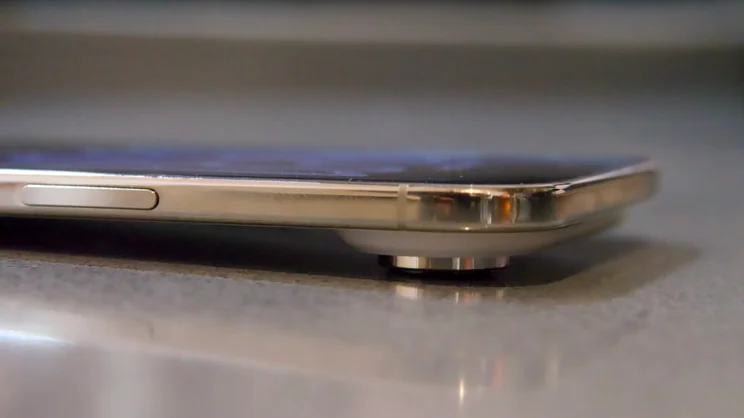
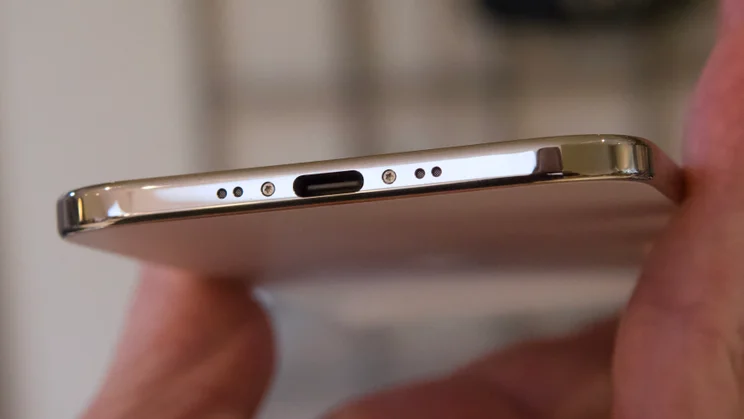
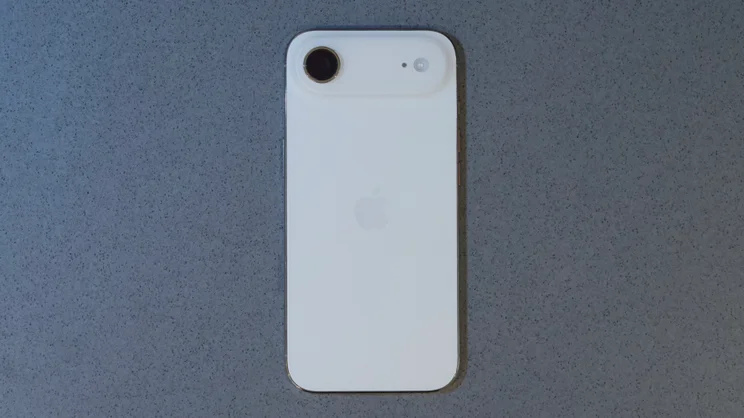
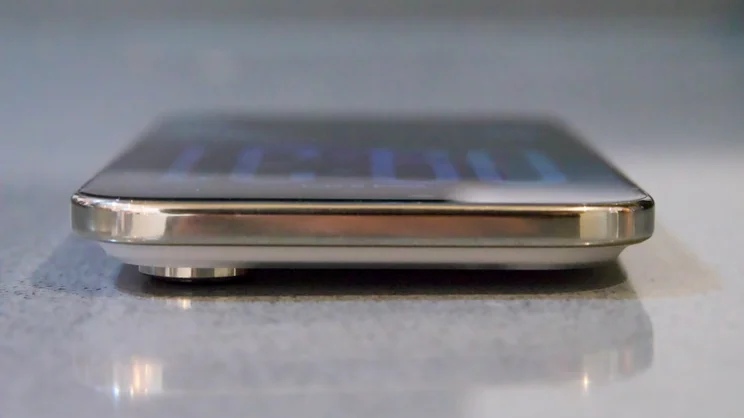
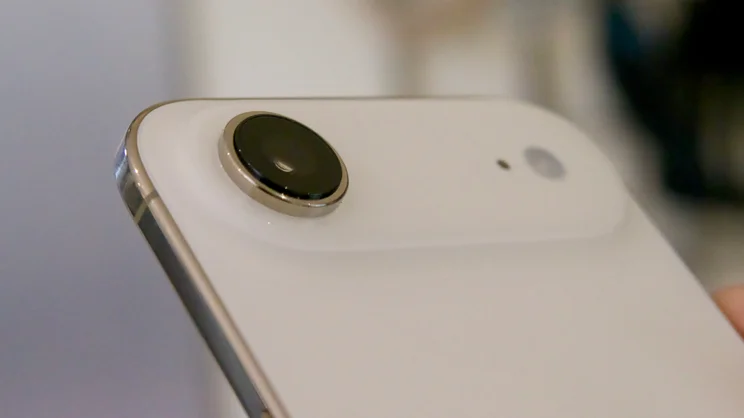
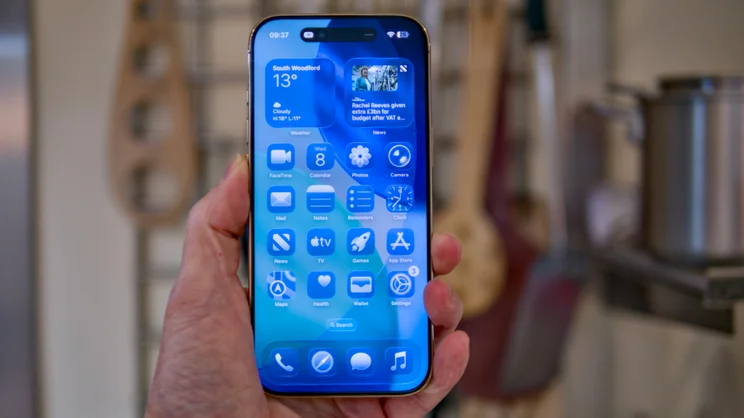
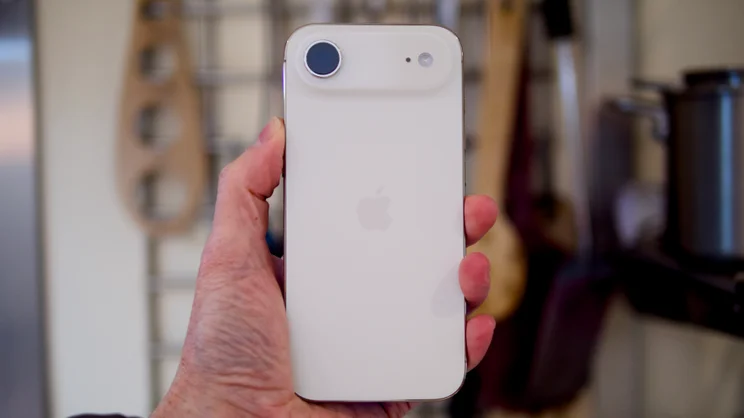
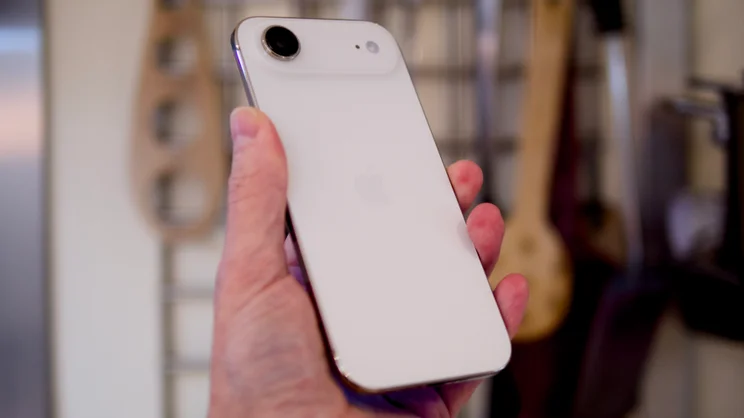
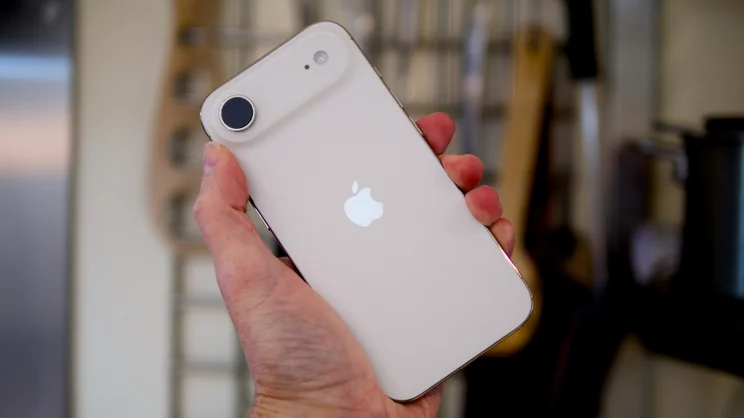

- Thin and light
- Display is bright and colourful
- Surprisingly good battery life
- Only one camera
- Camera bump is huge
- iPhone 17 is £200 cheaper
I’ve been reviewing smartphones for long enough that the Apple iPhone Air doesn’t hold much in the way of wonder for me. It’s an extraordinary piece of design and a lovely phone – and it’s probably the bravest thing Apple has done with its iPhone lineup since, well, the very first one back in 2007.
But until Apple has stepped out with a foldable to compete with the likes of the Samsung Galaxy Z Fold 7 or the Pixel 10 Fold Pro, I retain the right to be cynical. Apple needs to do more than this to keep up with the Joneses.
Still, the phone does get plenty right. It’s well-made, clad in tough Ceramic Shield glass and tough titanium alloy, it feels surprisingly robust – this is not a phone that’s going to bend particularly easily – and it’s almost as quick as its iPhone Pro brethren. But is it worth the extra premium over the iPhone 17?
What you need to know
The iPhone Air is a new kind of iPhone – it’s a smartphone with the emphasis firmly on the design and Apple has certainly delivered on that front. Although the camera housing does protrude a lot at the top of the phone, the main body measures a mere 5.6mm from front to back and as long as you don’t put it in a case, it feels amazingly slender in the hand.
Coupled with its polished “Class 5” titanium alloy frame and glass, matte-finish rear, this is the loveliest an iPhone has felt for quite some time. If you are sceptical, as I was, I do recommend you pop down to your local Apple store to get your hands on one – you may well be surprised at your reaction.















However, Apple has had to make some compromises to achieve this design feat. The iPhone Air only has one camera – a 48-megapixel, f/1.6 unit – and its battery isn’t as capacious as its brethren. Apple says it can manage 27 hours of video playback, but the cheaper iPhone 17 can do 30 hours and the iPhone 17 Pro pushes to 33 hours. The iPhone Air also only has one speaker, which makes a significant difference to audio quality.
It’s not all bad news, however, and Apple has still managed to squeeze in plenty of its latest goodies: the latest Apple A19 chipset; a 6.5in 120Hz ProMotion display, that, in terms of size, sits neatly between the 6.3in of the iPhone 17 and the 6.9in of the iPhone 17 Pro Max; IP68 dust and water resistance, plus Ceramic Shield glass at the front and rear of the phone.
Price and competition
If you’re surprised by how much Apple has achieved in so little space, you probably won’t be taken aback to learn that there’s a premium to pay for the privilege of owning such a slender slice of technological desirability. The base model of the iPhone Air is £999, or £200 more expensive than the only slightly thicker and more capable iPhone 17.
It’s available in four colours – Sky Blue, Light Gold, Cloud White and Space Black – a relatively subdued, yet sophisticated palette, and comes with either 256GB, 512GB or 1TB of storage. The latter two options up the price to £1,199 and £1,399, by the way.
The direct alternative is fairly obvious – there is only one other premium ultra-slim non-folding phone on the market right now: the Samsung Galaxy S25 Edge. This is a touch thicker than the iPhone Air at 5.8mm, but it has a much less prominent camera bump and an extra ultrawide camera to boot. You can also get your hands on one for much less than the iPhone Air – I’ve seen it on sale at below £800 – and with battery life on a par, it’s much better value for money.
Design
So we know already that the iPhone Air is thin – that is it’s sole reason for being – so let’s look at that more closely. In fact, it measures 5.6mm from the front glass to the rear. Just as significant, for me at least, it’s extremely light, too; the merest slip of a thing at 165g. For the sceptics out there I can absolutely confirm you do notice the difference between this and a regular phone – for example, the iPhone 16 Plus, a phone I’ve been using as my daily driver for the past 12 months.
All other things being equal, I’d rather have the iPhone Air in my pocket. The trouble is, all other things are not equal. One issue is, of course, that if you put it in a case, it instantly gets much, much thicker. And at this point, you might as well be paying less for an iPhone 17, or getting more for your money with an iPhone 17 Pro.















Another thing to point out here is that the camera bump is rather prominent, adding a whopping 5.6mm to the thickness of the main body of the phone. It’s double the thickness of the rest of the chassis. In fairness, the way Apple has designed this does mitigate against it looking completely hideous – I rather like the way this “plateau” as Apple calls it rises up from the rest of the phone like an Arizonan mesa from the parched desert floor – and it is rather clever that the phone’s Apple chipset and motherboard are all squeezed into it (the thin bit is all battery). But it does feels a bit like I’m making excuses for it at this point.
I’m not going to stand in judgment over you for buying an iPhone Air – I simply can’t see any practical benefit. And, by the by, two other things are worth noting at this juncture: first, the phone rocks dramatically when you place it down on a flat surface; second, the Samsung Galaxy S25 Edge’s camera bump adds a lot less to the overall thickness of that phone.















Ignoring the (rather skinny) elephant in the room for a moment, though, the physical features of the iPhone Air are mostly as you’d expect from a modern iPhone. There’s a standby/Siri button on the right edge towards the top, plus the touch-sensitive, two-stage camera button towards the bottom. On the left edge are the volume buttons and a button you can customise to perform various functions, and on the bottom edge is the phone’s USB-C charging port and what looks like a pair of small speaker grilles.
And this brings us to yet another small issue: those grilles are merely decorative. Indeed, the only speaker in this phone is situated at the top edge of the phone where you hold it to your ear while making phone calls. And the difference in audio quality is stark. While the iPhone Air’s single speaker does go plenty lound, it lacks the body and richness of speakers on a phone with stereo speakers like the iPhone 16 Plus or the iPhone 17 Pro.















To give Apple some credit, though, the Air does feel extremely well-made. Its polished Class 5 titanium frame looks rather natty, its subtly rounded-off edges mean the phone is comfortable to hold and its IP68 dust and water resistance rating does add to that general peace of mind.
And as for iOS 26, I don’t mind the “Liquid Glass” look, and the extra cutomisation options it brings with it, but not everyone has been so complimentary. And I’m baffled that the look has not been applied throughout the UI. In Settings, for instance, the icons are still old-style iOS.















There are plenty of new, useful features, though. The new, glassy lock screen clock options are neat, as is the Spatial Scenes feature, which lets you add a spatial 3D effect to 2D photos that respond with movement as you tilt your phone this way and that.
Call screening will also come in handy if you find yourself plagued by robo calls at all times of the day or night, and I’ve already used hold assist plenty – it’s a godsend if you don’t want to listen to mind-numbing hold music while you wait in a queue to speak to your doctor or technical support.
Display
The iPhone Air’s screen measures 6.5in across the diagonal, so it’s a little smaller than the iPhone Pro Max’s 6.7in screen and a little larger than the iPhone 17’s 6.3in effort.
The resolution is 1,260 x 2,736, it delivers a pixel density of 460ppi, and it benefits from Apple’s Always-On technology, something I really missed last year when I was using an iPhone 16 Plus. Plus it comes with the usual Apple display staples of Dynamic Island and True Tone automatic colour adaptation.















It doesn’t lack when it comes to the technical specifications, either. Like every other Apple iPhone model in this generation it gets a Super Retina XDR display, 120Hz ProMotion technology, an AMOLED panel capable of reaching a blinding 3,000cd/m2 (candela per square metre – equivalent to the nits measurement quoted by Apple), and full coverage of the P3 colour gamut.
I set about testing it with a colorimeter and it performed as well as iPhones have typically performed in recent years. I found brightness peaked at 2,980cd/m2 in HDR, while colour accuracy in sRGB was peerless at an average Delta E of 0.75. Perhaps even more useful than how bright they go, I love how dim the iPhone Air’s screen can be set – it will go all the way down to 1cd/m2 if you want it to, which is exceptionally useful if you want to browse in the dark without disturbing others.
My overall view? This is a stunning display, no two ways about it. But, then, most smartphone displays are as good as consumers need these days. There is very little to separate them from one another.
Camera
That’s my conclusion on the camera, too. What you get is great: a 48MP sensor with OIS (optical image stabilisation) coupled with a bright f/1.6 aperture and a 26mm equivalent wide-angle lens. Apple provides various tools to simulate other focal lengths, but at the end of the day this is a single camera module. The 2x telephoto and 35mm options you get by tapping the controls in the app are, effectively, applying a crop to your photos.
Having said that, this is a pretty good camera in the main. It’s the same main camera as you get on the iPhone 17 Pro and the Pro Max, and it produces mighty fine images both in good and poor lighting conditions.
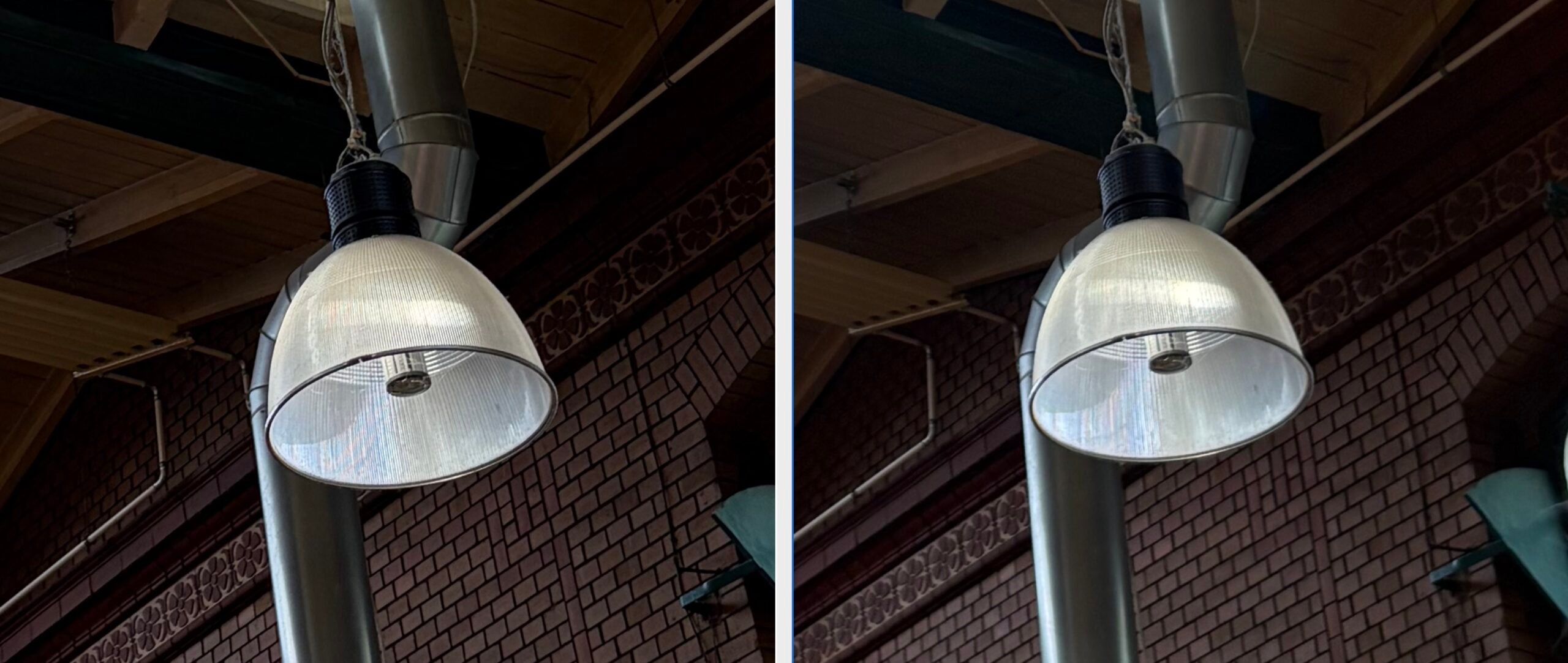
I compared it directly against the iPhone 16 Plus and the differences were surprisingly stark. I preferred the Air’s results in lower light – you get a little more detail and the colour is a touch richer – but it was in telephoto mode where the biggest differences could be seen. In the comparisons below, you’ll see that the iPhone Air’s rendering of the fine brickwork at 2x is much sharper than the 16 Plus’.

As for video, you get Dolby Vision video recording in 4K at up to 60fps, which delivers exceptional video quality, especially when viewed via an Apple TV box. However, as usual, video is afflicted badly by reflections off the body of the inside of the protective glass when capturing scenes with bright lights in them. This might not bother you, but it bothers me and it’s something Apple really needs to fix.
Perhaps the more interesting camera in the Air’s admittedly fairly paltry selection of two, though, is the 18MP Centre Stage selfie camera. This utilises a square sensor, so as on a GoPro camera you can apply portrait or landscape cropping without losing a ton of detail or just record yourself in full frame and crop later. I rather like this feature and image quality is rather good.
Finally, something else worth mentioning is that iOS 26 introduces a new feature called Dual Capture, which records up to 4k 30fps video from the main camera at the same time as selfie video from the front. This is something you’ve been able to achieve using third-party apps on previous iPhones (various Android phones have offered it as an option in the past, too), but this is the first time we’ve seen it fully integrated into the iPhone’s main camera app.



Performance and battery life
You might expect one of the main compromises of the extra-thin chassis to be reduced performance. After all, it’s more difficult to dissipate heat in a body this slim and, therefore, sustained performance is likely to be slower.
Apple hasn’t hobbled the iPhone Air’s potential too much, though. It runs the same A19 Pro chipset as the Pro and Pro Max phones, the only difference being that the Air has one fewer GPU cores. And with 6 CPU cores and 5 GPU cores, its performance is pretty much as you’d expect in the benchmarks.
As you can see from the charts above, the CPU benchmark scores are similar between the Air and the Pro, but the Air lags behind noticeably when it comes to the GPU grunt – understandable given the relative lack of cores.
The phone itself, feels suitably nippy, though, and that 120Hz display makes all the difference compared with the feel of an iPhone 16 or 16 Plus. It’s smooth as you like and even relatively demanding mobile games such as Genshin Impact aren’t too much of a challenge for it.
So far, no surprise. Where the iPhone Air did throw up a bit of a shock was battery life. I had fully expected it to fail miserably, given Apple’s previous history with smaller, less well-specified handsets such as the iPhone SE. However, in lasting 27hrs 13mins, the iPhone Air matched the iPhone 16 Plus, and the Samsung Galaxy S25 Edge in our video playback battery tests, only falling behind the iPhone 17 Pro and the 16 Pro Max which sat at around 31 hours.
That’s a remarkably good performance given how slim this phone is and it should be good for around for a comfortable one to one-and-half-day’s worth of moderate use. It’s certainly no lightweight and it’s far better than either the Google Pixel 10 or the Pixel 10 Pro.
Alas, Apple continues to be conservative when it comes to charging speeds. The Air will charge up to 50% in 30 minutes over USB-C with a 20W charger or higher. It takes the same time with a 30W adapter paired with a MagSafe Charger, which is more encouraging, but it’s still slow compared to, say, the OnePlus 13, which can charge to 100% from zero in well under and hour.
[battery life chart goes here]
Apple iPhone Air: Verdict
Despite its shortcomings, there is nothing fundamentally wrong with iPhone Air. In fact, it gets an awful lot right. In particular, that slender frame does feel lovely in the hand and it’s nice and light in the pocket. The camera you get is great, it feels smooth in operation, I have no complaints about the display and even the battery life isn’t too bad.
And yet, as I’ve said before, I’m not convinced. You can save £200 if you opt for the iPhone 17, and get more for your money, with an extra ultrawide camera at the rear. Or you can go for the iPhone 17 Pro for an extra dollop of battery life, more power and a 4x telephoto lens – for a mere £100 extra. The Samsung Galaxy S25 Edge, meanwhile, delivers the thin phone experience for much less money.
So, should you buy the iPhone Air? Well, I’m afraid to say I’d struggle to recommend it. If Apple had managed to squeeze in even one more camera at the rear, I’d have been much more positive. As it is, I’d advise choosing either the iPhone 17 or the 17 Pro instead.

The iPhone Air is thinner than a stack of two pence pieces

















